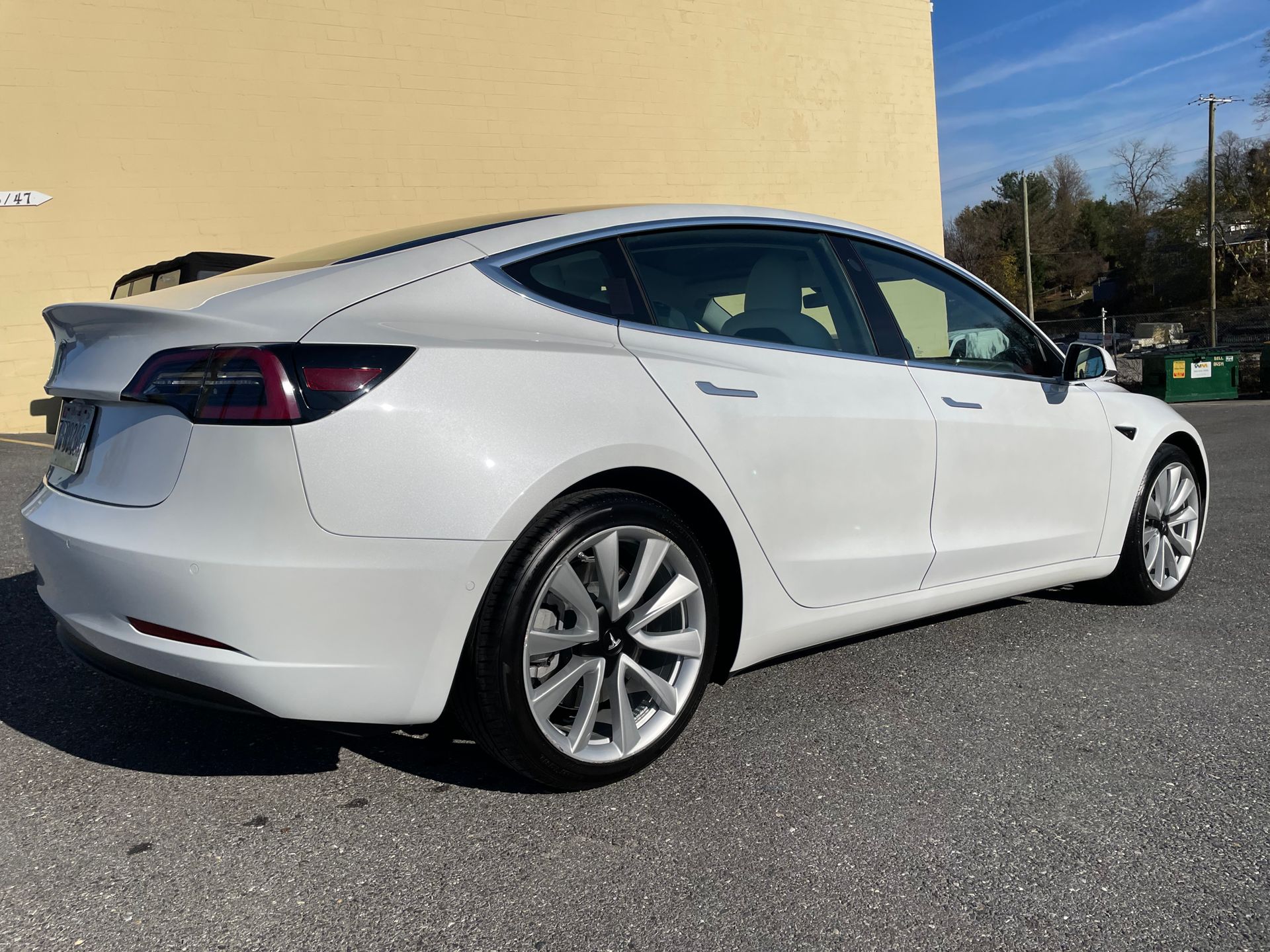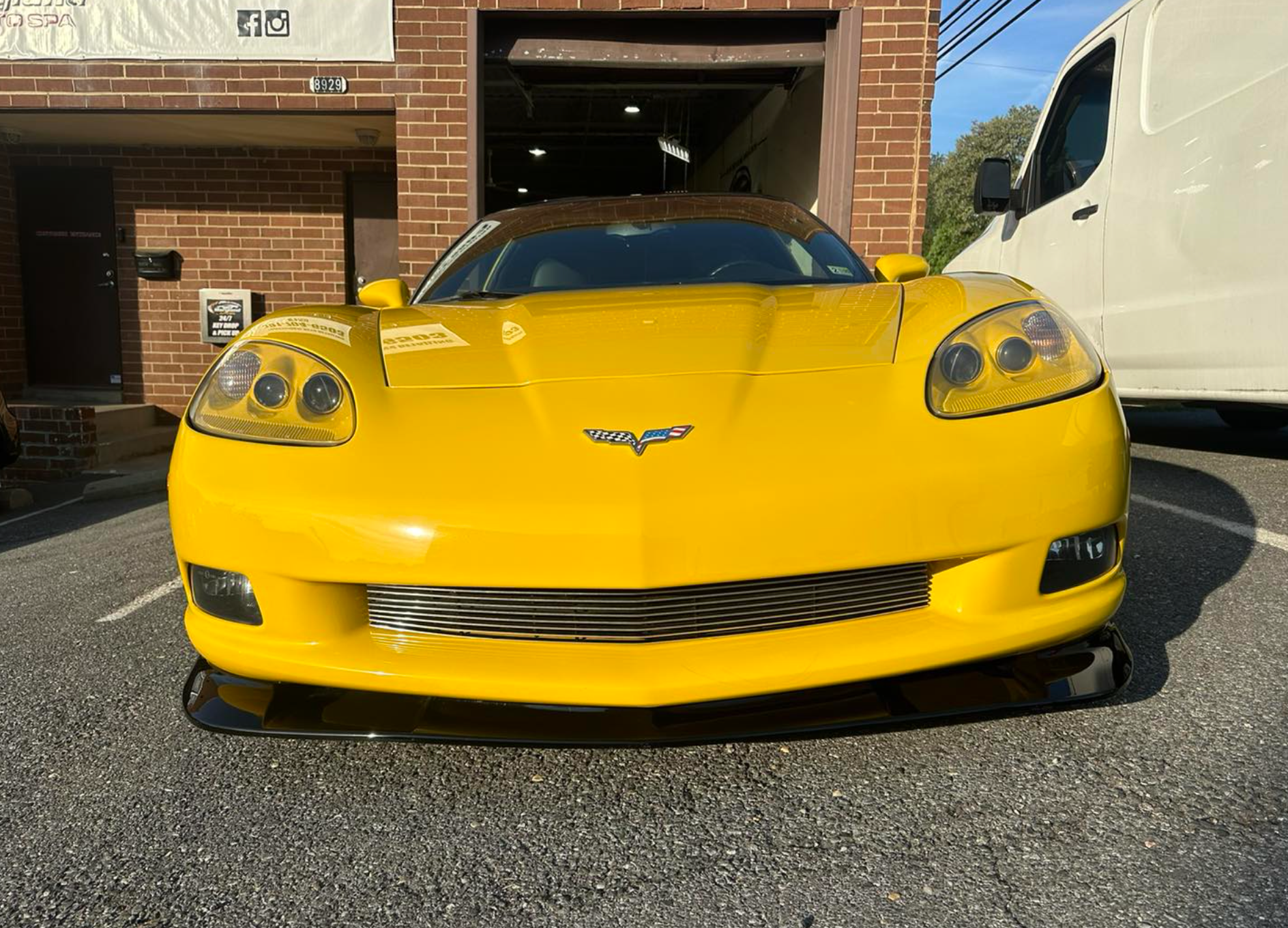Can You Wax Over Ceramic Coating? Expert Advice for Car Maintenance
SCHEDULE ONLINE GET A FREE ESTIMATELayering wax on top of a ceramic coat can weaken its purpose, diminishing your car's polish. This happens as wax fails to bond properly with the underlying ceramic layer, resulting in an inconsistent finish that compromises both the shine and the protective attributes of the coating. Imagine having a perfect ceramic shield for your car, only to spoil it with unexpected wax effects, leading to a less impressive look and protection level. You might want to carefully consider what substances you apply to your vehicle.
Waxing over a ceramic coating is not professionally recommended because the coating provides superior protection and hydrophobic properties, making additional wax redundant and potentially harmful to the performance of the ceramic coating. Placing wax on top of a ceramic coating can make it look dull and collect dirt. It may also need to be stripped off and reapplied, which takes away from the ceramic coating's benefits. Let us go into more detail on whether or not you should wax over ceramic coating.
Consequences of Waxing Over a Ceramic Coating
The allure of a lustrous, glossy finish on your car is undeniable, and ceramic coatings are known for providing just that. However, an erroneous attempt to wax over a ceramic coating can lead to undesirable outcomes. The primary issue arises from the fact that wax is unable to form an effective bond with the molecular structure of a ceramic coating. This inability results in an uneven texture and can compromise the durability and effectiveness of the ceramic coat. Some common consequences of applying wax over ceramic coatings are-
Uneven Texture: When wax is applied over a ceramic coating, it fails to adhere uniformly due to the hydrophobic properties of the ceramic layer. As a result, the surface may appear patchy and irregular, with certain areas exhibiting an unsightly texture. This diminishes the desired sleekness and uniformity usually associated with a well-maintained vehicle.
Reduced Shine: An adverse consequence of waxing over ceramic coating is the potential reduction in shine. The chemical composition of the wax clashes with the ceramic layer, hindering its ability to enhance and contribute to the glossy appearance expected from a freshly coated vehicle. Instead of adding to the shine, wax can detract from it, leading to disappointment for car owners seeking that impeccable sheen.
Durability and Protective Properties: The fundamental protective qualities of the ceramic coating also suffer when wax is improperly applied. The wax acts as a barrier, impeding the ceramic layer's ability to shield the car's surface from environmental contaminants and physical damage. Consequently, this undermines the very purpose of having a ceramic coating in place.
Understanding these consequences sheds light on why it's crucial to adhere to proper maintenance practices for ceramic coatings. Let's explore how such maintenance measures enable you to preserve your car's gleaming finish and ensure long-lasting protection.

Factors That Affect Ceramic Coating Performance
Ceramic coatings are like invisible armor for your car. They're engineered to form a strong molecular bond with the vehicle's paint, providing superior protection and an unrivaled shine. But this strong bond can suffer when exposed to certain elements, and unfortunately, traditional car wax is one of these culprits.
The problem is that wax has a different purpose and composition compared to ceramic coatings. Wax is designed to be spreadable and create a protective layer on the car's paint, while ceramics are formulated to bond at a molecular level with the paint. When you try to apply wax over a ceramic coating, these two products just don't get along.
The issue lies in the fact that the wax can weaken the molecular bond formed by the ceramic coating. This means that the protective properties of the ceramic coating, such as its hydrophobic abilities and resistance to environmental pollutants, could be compromised. Needless to say, this plays a significant role in diminishing the overall level of protection provided by the ceramic coating.
Furthermore, wax can interfere with the hydrophobic properties of ceramic coatings, affecting their ability to bead water and sheet it off the surface of your car. Think about how rainwater beads up and runs off a freshly waxed vehicle—trying to wax over a ceramic coating disrupts this natural behavior. The water won't bead as effectively, potentially leading to increased water spots and stains on your car.
So essentially, applying wax to a ceramic coating is counterintuitive. It not only weakens the protective capabilities of the ceramic coating but also interferes with its ability to repel water – an essential aspect of maintaining your car's shine and cleanliness.
Durability of Ceramic Coatings versus Wax
When it comes to protecting your car's paint, durability is a key factor to consider. High-quality ceramic coatings are designed to endure the test of time. With proper care, they can provide long-term protection for your vehicle's paint, lasting anywhere between 5 and 10 years. This means you won't have to worry about reapplying it frequently, allowing you to enjoy sustained protection without the hassle of frequent maintenance.
On the other hand, traditional wax requires reapplication every 9-12 months to maintain its protective properties. While waxing your car may be a familiar routine, it's important to recognize that the frequency of application is significantly higher compared to ceramic coatings.
The remarkable difference in longevity between ceramic coatings and wax highlights the greater resilience of ceramic coatings in protecting the paint job of your car. Since wax lasts for less than a year before needing to be reapplied, it places a greater burden on car owners in terms of ongoing upkeep and maintenance. Conversely, ceramic coatings offer long-term peace of mind, requiring minimal maintenance while providing robust and enduring protection.
Beyond the convenience factor, the durability of ceramic coatings also translates into cost savings over time. The infrequent need for reapplication means that you'll spend less on products and labor associated with maintaining your car's exterior. This makes ceramic coatings a prudent investment for those seeking durable, long-lasting protection for their vehicles.
Furthermore, the extended lifespan of ceramic coatings contributes to environmental sustainability by reducing the frequency of product application and waste generation associated with more frequent wax reapplication. This aligns with an increasing global emphasis on eco-friendly practices and products within the automotive industry.
The remarkable durability of ceramic coatings offers long-term benefits in terms of convenience, cost-effectiveness, and environmental impact. By choosing ceramic coatings over traditional wax, car owners can enjoy prolonged protection for their vehicle's paint without the need for frequent reapplications or compromise on quality. Read more about
ceramic coating vs. traditional wax!

Ceramic Coating Maintenance for Optimal Shine
So, you've invested in a ceramic coating for your car and want to maintain that brilliant shine and protective ability. Unlike traditional waxing, ceramic coatings require minimal maintenance but do benefit from occasional care to uphold their exceptional qualities.
To keep the ceramic coating on your vehicle shining its best, it's essential to use a ceramic coating-approved shampoo when washing your car. This specially formulated shampoo is gentle and won't strip away the protective coating like other harsh detergents might. When washing, employ a two-bucket hand wash technique, which reduces the risk of reintroducing dirt or debris to the car's surface as you wash. This approach helps preserve the benefits of a good-quality ceramic coating, ensuring its longevity and effectiveness in shielding your car's paint.
Furthermore, regular upkeep involves the use of a dedicated rejuvenating spray designed specifically for ceramic coatings. The ceramic coat SiO2 boost spray acts as both a protective layer and a restoration agent for your ceramic coating. By using this product, you can rejuvenate the coating to retain its shine and enhance its protective properties. It forms an additional layer over the existing ceramic coating, fortifying its resilience against environmental elements such as UV rays and contaminants like water spots. Shop all the auto detailing products here!
Consider these maintenance practices as part of your routine to optimize the shine and protective abilities of your ceramic coating. By doing so, you'll ensure that your investment in this advanced protection reaps long-lasting benefits, keeping your car looking pristine while safeguarding it against environmental hazards.
Limitations and Issues with Layering Wax Over Ceramic Coatings
Layering wax over a ceramic coating may seem like a good idea at first, but several issues can arise from this practice.
Firstly, when you layer wax over a ceramic coating, the wax molecules struggle to effectively bond with the ceramic-coated surface. This can result in an unequal distribution of the wax, leading to diminished hydrophobic abilities and an inconsistent shine across the vehicle's surface.
Moreover, applying wax to a ceramic coating risks trapping contaminants between the layers. The porous nature of wax allows particles such as dust, dirt, and grime to become embedded, creating an unsightly appearance and potentially causing damage when removed.
It’s important to remember that the purpose of a ceramic coating is to provide long-lasting protection for your vehicle's paintwork. The advanced protective benefits of the ceramic coating can be compromised when covered by a layer of wax. Essentially, layering wax over a ceramic coating nullifies its exceptional protective qualities, making ceramic coatings less desirable.
Given these limitations and associated risks, it becomes clear that layering wax over a ceramic coating is counterproductive. Instead of enhancing the protective qualities of the ceramic coating, it runs the risk of negating its benefits and creating additional maintenance challenges.
Understanding these limitations is crucial for maintaining the integrity and performance of your vehicle's protective coatings. By avoiding the practice of layering wax over ceramic coatings, you can ensure that your vehicle retains its optimal appearance and protection for years to come.
To learn more about proper car maintenance techniques and professional ceramic coating services, visit us at Maryland Auto Spa or call us at (301) 704-6503.




